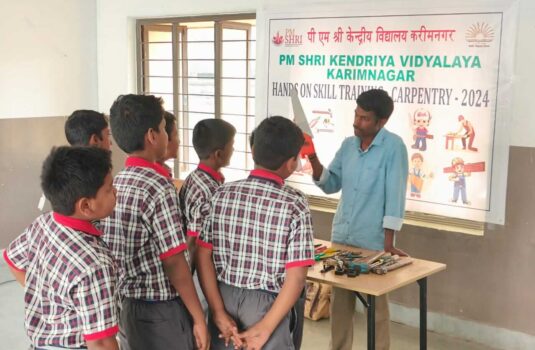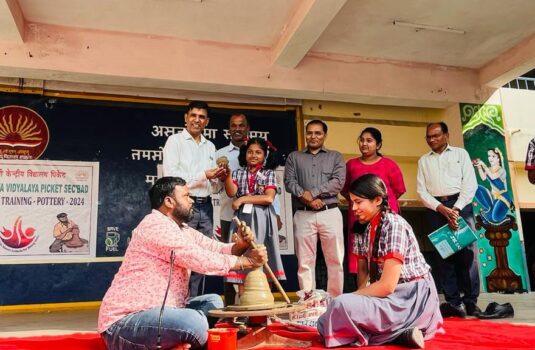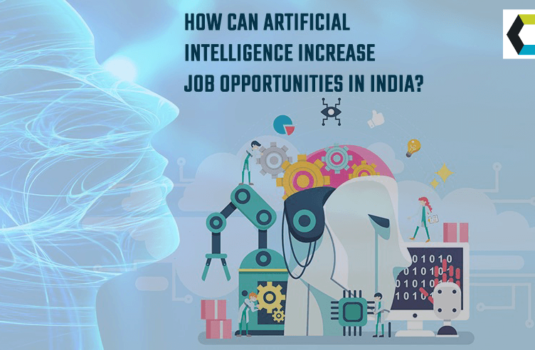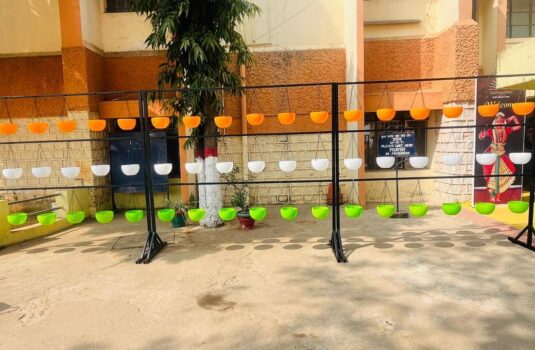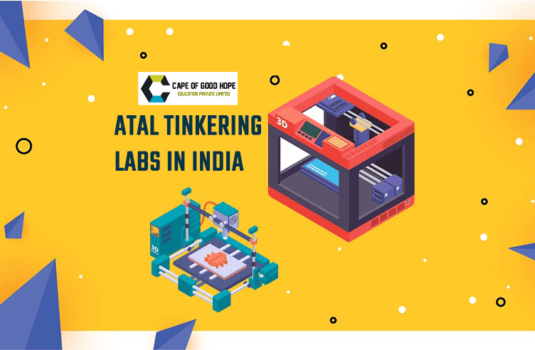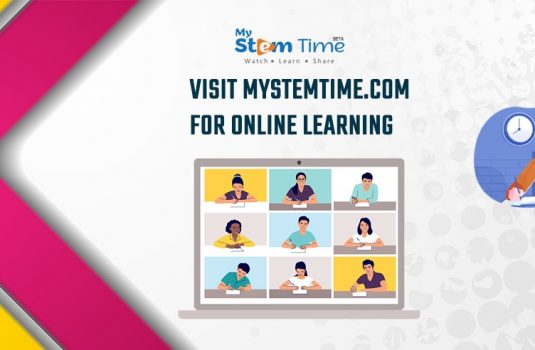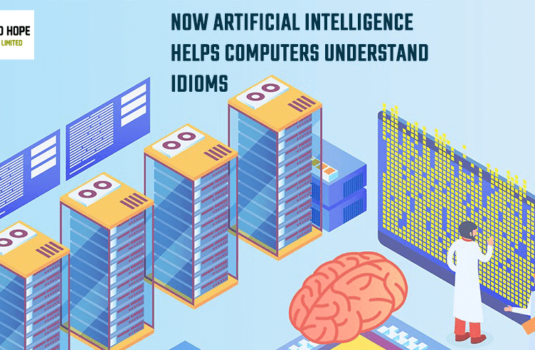Growing population, lack of political will, economic slump and some other pertinent aspects have been the reasons behind blurring the hopes of job opportunities in India that have brought them to almost their saturating point. But if the old proverb “Where there is the will there is a way” is followed, it plays an encouraging role to help the Indian youth explore newer ways of opportunities and become symbiotically advantageous with their knowledge, expertise and spirit to work. There are various disciplines of education, and many of them include professional courses, and learning Artificial Intelligence (AI) being one of them has better prospects for Indian youth. Though developed countries are harnessing AI to the best they can afford, India has also joined the bandwagon and it is also on the path of adopting AI for its better future. However, before we go into its depth, we must have a glance of Artificial Intelligence.
What is Artificial Intelligence?
Artificial Intelligence (AI) is also called Machine Intelligence because it’s the simulation of human intelligence. Whatever benefits we obtain from AI is in fact, the reflection of human brain that applies to program for a specific output to obtain from AI. Driverless trains and vehicles, ATM machine, appearance of similar advertisements and options for songs and movies of your choice on social websites and even many things which we find and utilize in our day-to-day life are based on automation that works by AI.
15 Ways of How AI can increase job opportunities in India
The demand for fusion of man-machine teams
The future of job opportunities in India banks on how nicely humans and artificial intelligence combine together to build the fusion of man-machine teams. This initiative can blend the strengths of both AI and humans to bring out better business results.
Nationwide Employment
The companies that bring AI into effect can generate more money to expand their businesses. As a result, AI can lead to higher employee wages, better technology tools, and huge efficiency. With such accomplishments, companies can broaden their access to other parts of the world. This, in turn, will demand a global workforce, which India can generate more job opportunities for those who will be well-versed in AI.
The Role of AI in Marketing & Sales
As AI is playing a significant role in marketing and sales, it can build effective, large-scale sales forces by developing smart databases. Such tools as Zendesk and Salesforce are making use of AI to develop the insights that can enable the companies in inducting the ideal sales teams for their businesses.
AI can help companies rise
If big data of large amounts can be used prudently by AI and machine learning algorithms, it will enable companies perform relatively better. The employee retention rate can also be enhanced by it and it can help in new customer acquisition. Thus, it can create new job opportunities as companies will start flourishing and fetching benefits to the industry as a whole.
AI can generate new job positions
According to a recent World Economic Forum report, around 50% of the full-time employees of companies will shrink in a few years to come. Though AI will play a role to curtail jobs, but simultaneously it will make a demand for new job positions. In order to make AI function impeccably, humans will be required to have a check on work, bringing improvement to it and manage it. It is indicated by WEF that the new position will call for additional skills for managing the edge between technology and man.
Jobs maintenance by AI
AI is aiding businesses to operate more smoothly, particularly in such areas as customer service, automation, and so forth. There are also some companies that have even integrated AI in all their essential systems. Since AI is being implemented in several industries, the demand for an AI maintenance workforce is on rise. Resultantly, companies would need a large number of AI developers and engineers for maintenance of their systems.
AI’s role in Robotics
As estimated, the realm of robotics is going to experience an immense growth in the year to come. AI-based robots like stationary robots, non-humanoid land robots, and fully automated aerial drones, are attaining substantial business interest from companies across the world. Some of the Indian companies will also take part in it. This increasing demand is sure to widen the avenues of job opportunities for AI robotics engineers.
Acting as Facilitator
Companies adopting AI are going to make a demand for AI facilitators who will bring business to them with flexibility to create their own AI environments. It will include the creation of automated environments as also the build systems like virtual assistants. These environments will help the workforce perform better without depending considerably on security, governance, data control and compliance.
AI in Healthcare
AI has more scope in healthcare. As per PwC estimates, healthcare will be one of the biggest winners from AI, where increase in job opportunities can be nearly 1 million, and India may share a considerable percent of this increase. In years to come, AI-powered healthcare is going to be available at a scale and on-demand for everybody. Therefore, the need for AI-assisted healthcare jobs is expected to see a big rise.
Playing major role in Automated Transportation
Such companies as Uber and Google are investing millions on AI-driven self-driving cars and trucks. As such mode of transportation is going to pick market up in the future; it will create a large number of vacancies for AI and machine learning engineers not only in foreign countries, but in India as well.
AI in Digital Assistants
The Google Assistant, Siri, Alexa, and Bixby are such Digital Assistants that are getting more active by the year. Global IT giants like Google, Samsun, and Amazon are investing billions into making digital assistants perform complicated tasks. These works involve learning about our daily routines, speech recognition, and so on. As per Zion market research, by 2025, the global intelligent virtual assistant market will go up to $19.6 billion.
In Financial Services
Today, banks and financial services companies need AI engineers to develop the systems that will identify and lessen the incidents of fraud. Besides security, AI is being used in financial marketing. In this way, the AI job opportunities in financial companies will also increase.
In Gaming Industry
AI applications are found to be substantially large in the area of gaming industry. Whether it is design and development to in-game operations and maintenance, AI’s role in receiving rewards for gaming companies has been of remarkably substantive. As the reality games becoming more popular, companies are opting to invest major amounts on AI-based systems. In this way, the demand for AI developers in gaming industry is going to grow considerably.
In Education Sector
According to a recent report of PwC, the education sector is going to create almost 200,000 extra jobs, and of course, India will also have a certain number of vacancies for AI qualified youth. The concepts like smart content, personalized learning, and other data-driven operations hugely hinge upon AI.
In Entertainment Industry
The entertainment industry has very high expectation from AI and machine learning potentials and professionals. With identification of the online consumers’ behaviour, AI algorithms help in recommending media that suitably meet the consumers’ choices. Hence, the industry is going to hire a colossal AI workforce to meet their requirements.
India has embarked upon harnessing the benefits of AI; however it needs to widen its field to maximize the use of AI not only to run all machineries and industries smartly but also to maximize the number of vacancies for AI professionals, thereby increasing their dependence on AI. So it’s also an opportunity lies ahead for the Indian youth to learn AI and become AI expert to secure job across the world besides having broader chance to get absorbed in motherland per se.
